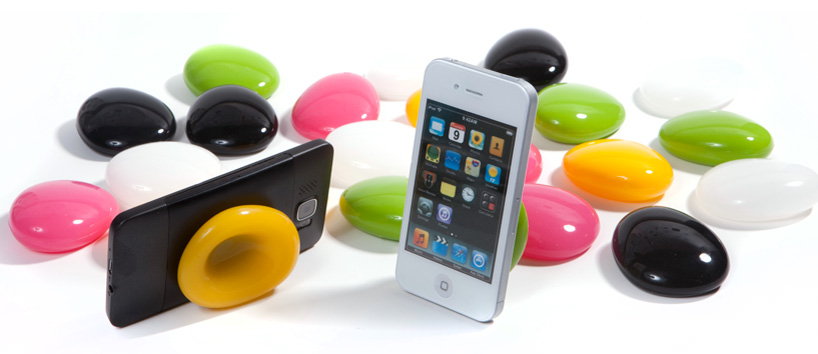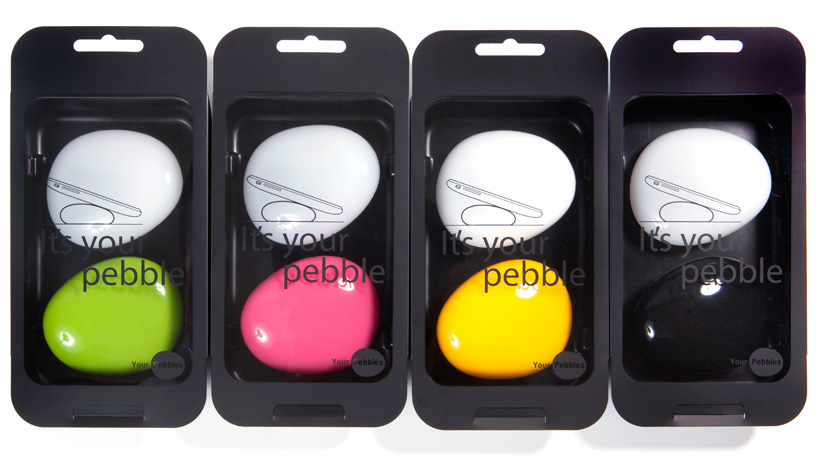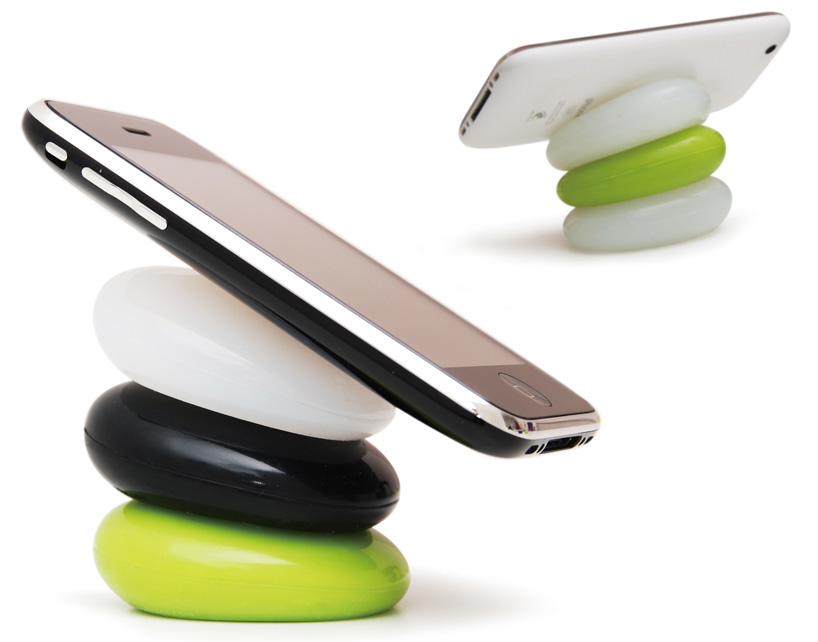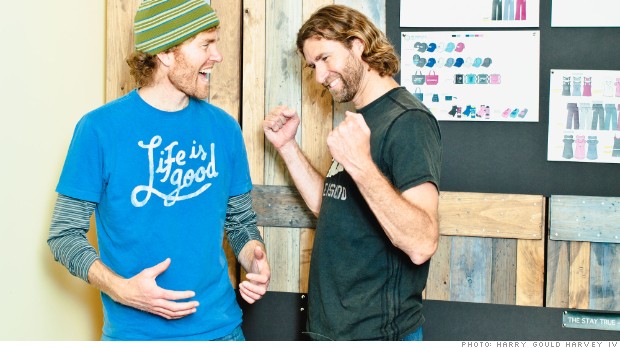資料引用自https://www.youtube.com/watch?v=M4SF_YXBqwc
2014年5月23日 星期五
磁帶分配器

2014年5月20日
德克reilink反思傳統的磁帶分配器與聯clicktape
緊湊的 “clicktape” 由荷蘭設計師德克reilink提供了一種替代傳統的磁帶分配器 通過連接兩個圓形組成部分。它的形狀的簡單性使得能夠很容易地使用該產品,同時也使它重量輕和成本效益的生產。一個特殊的縮進只是不銹鋼刀片上面,使得它快速,每次搶底,而靈活的環指帶一個角色可以點擊進入飲水機沒有任何麻煩。當它已經完成,剩下的芯可以直接從保持器壓出。
該產品目前可在Kickstarter上 有兩個額外的顏色,綠松石和綠色。在5月31日資金結束。
'的clicktape飲水機“
視頻禮貌德克reilink的

使用三維打印構建

易與旅行

展示它是如何輕鬆地添加和刪除磁帶

不同的顏色可供選擇

打開飲水機

由德克reilink設計
資料引用自http://www.designboom.com/design/derk-reilink-tape-dispenser-clicktape-05-20-2014/
智能卵石

2011年7月28日
designboom店:智能卵石

“智能卵石”現在可以在designboom店!
不要讓石頭和硬的地方和捕獲!通過designmaxx的韓國設計師kijin脛創建這些豐富多彩的鵝卵石為您的手機,筆記本電腦,iPad或其他設備提供一個舒適的休息點。堆疊起來,甚至使用一些作為腕托!



筆記本電腦的搖籃和冷卻器進行冷卻,你的電腦

腕托

按智能卵石的中間,你可以堅持他們在一個乾淨的表面。
也見出智能卵石的不同用途的視頻:
每個卵石的尺寸/重量:
50×60毫米/ 24克
材料:
防滑,耐熱矽
防滑,耐熱矽
內容:
一組由2卵石
一組由2卵石
可以有幾種顏色組合
資料來自http://www.designboom.com/design/designboom-shop-new-product-smart-pebbles/
2014年5月21日 星期三
KHYATI Trehan創造了一系列的說明信,描繪了一些我們這個時代最重要的科學和技術進步。E是留聲機愛迪生發明。
這些畫報快報描繪了一個突破性的發明
之前有一個留聲機,有它的一個圖。這是許多我們今天所知道的發明的情況下。科學家和發明家一直使用圖表來簡化複雜的想法,這些圖紙往往是模糊的轉向想法變成有形的事物或理論的第一步。
KHYATI Trehan ,設計專業的學生在新德里,致敬了一系列刻字插圖,描繪了一些我們這個時代最重要的科學和技術進步的科學圖的美感。這裡有一個發明對應於誰已計入製造的發現的人幾乎每一個字母表中的字母,每個。
因此,舉例來說,而不是出了留聲機作為P,Trehan決定成立留聲機到E,為托馬斯·愛迪生。你看到該設備分解成它的各個部分,並佈置的方式,巧妙地,但仍顯見,使大腸
該項目在校Trehan的時候,她正在讀一本書,叫做“十大最美麗的實驗。”Trehan被擊中大約威廉·哈維,醫生誰首先解釋了人體的血液循環系統的一章第二年來的。“我記得以為字母'W'看起來太像了無限大的符號,”她說。“我精神結合這兩個事件整合W,威廉·哈維的初始,並且找到了答案,我的任務,我是不會去尋找它。”
的伎倆Trehan被發現與發明的縮寫,它被證明是項目中最困難的部分對準的發明。“這就像找一個雙巧合,”她解釋說。“最初的骨架應該是類似的,他們所做的圖。”,需要有一個看上去至少有隱約類似於相應的字母結構圖。“扭捏不應該變成一個扭曲,”她說,並補充她無法找到的字母P,X和Q。適當的圖表
詳細的說明不犧牲科學性,準確性美學。相反,Trehan能夠巧妙地折疊技術細節到意想不到的形式。像字母F,代表邁克爾·法拉第發現感應電流。Trehan巧妙地打破Farday的理念融入到獨立的部分:線圈成為了F的基礎上,而導線向外延伸連接電池和檢流計。
Trehan的圖是部分科學詞彙表,一部分幀值得的藝術項目。她希望它們將被用於兩者。畢竟,大多數的技術進步今天,影響我們的世界會甚至從未存在,如果不是為了藝術加工。“實際上,一個圖是由視覺的任何想法,”Trehan說。“這是哪裡的智力和創造性的滿足。”
2014年5月17日 星期六
Life is good in the T-shirt business
Life is good in the T-shirt business
愛藝術的兄弟連心,其利斷金!
Life is Good T裇事業的成功故事。
從存摺僅78美元,發展到1億元美的過程。

愛藝術的兄弟連心,其利斷金!
Life is Good T裇事業的成功故事。
從存摺僅78美元,發展到1億元美的過程。

(Fortune)
If you're a new college grad who is crazy about art and want to avoid working nine to five, what do you do? For brothers Bert Jacobs, now 49, and John Jacobs, now 46, the answer was to drive a used van up and down the East Coast, selling T-shirts printed with their artwork. After five years of barely staying afloat and with just $78 in the bank, they decided to add optimistic messages to the T-shirts. That one seemingly minor modification launched a $100 million apparel business. Today, Life Is Good T-shirts, hats, and other items are sold by 4,500 retail stores nationwide, and the company offers co-branded greeting cards and stationery with Hallmark, a line of gourmet coffee with J.M. Smucker, and dog accessories with Planet Dog, all promoting positive thoughts.
John Jacobs: We grew up in Needham, Mass. My brother Bert and I are the youngest of six. Dad worked in a machine shop, and Mom stayed home.
Bert Jacobs: Both parents influenced us to be open-minded and to welcome ideas and thoughts from all walks of life. When I was 8, I had a seed-selling business, and during college I had a house-painting business called Positive Painting, which may have been a precursor to Life Is Good. I always wanted to go into business, and I graduated in 1987 with a BA in communications from Villanova University.
John: I graduated in 1990 from the University of Massachusetts at Amherst with a BA in English and a minor in art.
Bert: After graduating, I drove out to Colorado and went to work in a ski town. I delivered pizza at night and was a ski instructor during the day for a year. John was in school in Northern California on an exchange program, and we decided to do a cross-country road trip back to Boston. Along the way, we talked about developing a business together.
John: Both Bert and I liked to draw and were looking for a way to combine art and business to avoid getting a job. We realized T-shirts could be a vehicle for art. So in 1989 we started selling them on the street in Boston and in places like Harvard Square and Faneuil Hall. As we started the business, we both supplemented our income for a year with substitute teaching.
Bert: Selling 12 to 15 T-shirts in an afternoon was good. On a bad day, we'd sell nothing.
John: A year or two into it, we bought a used van and took the show on the road. We'd chart out six- to seven-week road trips to area colleges.
Bert: We started selling in college dormitories, and the success rate was better than selling on the street. There was a clear demographic target there.
We learned that if you found the girl everybody admired, and she liked your shirt, she'd sell the shirt for you. It was the queen bee factor. We got male friends to do the same in men's dorms for us. We were selling enough to keep the dream alive and not have to get a job. After 5½ years of selling T-shirts, we had $78 in the bank.
John: Then, in 1994, we talked about how people seemed worn down by the media's constant focus on the negative side of information. That led to a keg party at our apartment where we put drawings up on a wall. We had done a lot of music-inspired, cool, funky designs. But when we asked friends to write notes next to the drawings, we got a lot of comments about one drawing [a stick figure that smiled]. We decided to pair the figure with the words LIFE IS GOOD and printed up 48 T-shirts with it. We went to a street fair and sold all of them in the first hour. It confirmed that people were craving something positive that focused on the good, instead of what's wrong with the world. The T-shirts sold for $15, or three for $40, and we started taking them to stores.
Bert: Suddenly retailers started asking, "Does the smiley guy eat ice cream? Does he roller-skate? What else do you have?" We reacted to what people wanted and started drawing things that depicted the things that make life good.
John: We gave the character our nickname, Jake. My friends called me Jake, and Bert's friends called him Jake, but when we were together, they'd call us John and Bert. Our design was just different from the edgy, boastful, in-your-face slogans that were on T-shirts at the time.
Bert: Our concept was that optimism is powerful.
John: We ended up hiring a sales rep to take the product up and down the coast. There was a stretch where we opened an account every day for 70 days. During that time, we operated out of our apartment. We'd drive to the screenprinter, print the T-shirts, box them up ourselves, and mail them.
In the late '90s we rented the back of an 18-wheeler, which became our warehouse, and got permission to park it next to the screenprinter. Back then our lifestyle meant eating cereal, PB&J, and pasta every night. We started with mom-and-pop stores, then broke into chains like REI and Dick's Sporting Goods (DKS, Fortune 500). By 1996 we were making $260,000 a year.
Bert: Kerrie Gross, the girl who lived above us, helped us process the orders. In 1998 we hired her to take care of the office and sales reps.
John: Kerrie is now a partner in the business. In the late '90s we got our first office in Needham. It was exciting to have an actual warehouse. In 1998, when we crossed the million-dollar mark in revenue, investors came to us, wanting a piece of the equity. But we liked being able to call the shots, so we chose not to go the VC route, and sought a bank loan instead.
Bert: That was the first time we had to draw up a business plan. We got a half million dollars in credit to manufacture our own label of T-shirts. At the time, we were getting T-shirts from local screenprinters and were printing our artwork on Hanes shirts. To trademark LIFE IS GOOD, we had to put hangtags on the clothing, have our own label, and some other things.
John: We didn't have a marketing strategy, and when people suggested we do advertising, it didn't feel right. At the same time, we were getting notes and emails from people facing adversity -- like chemotherapy or the loss of a loved one -- telling us how Life Is Good T-shirts had helped them.
We got inspired by those people and decided to start a foundation. Now, instead of advertising, we put on festivals that benefit kids who are overcoming violence, poverty, and illness, and promote the Life Is Good brand that way.
Bert: We originally called ourselves Jacobs Gallery but decided to change it to Life Is Good because we loved what the message is all about.
John: At this point, we have teammates much smarter than us in so many areas of the business. They enable Bert and me to focus on what we do best.
In 2012 we began a partnership with Hallmark to create greeting cards and stationery, using our sayings and artwork. We also have partnerships with Smucker's (SJM,Fortune 500) and Planet Dog. We're eager to get into other things, like publishing and filmmaking.
Bert: We're going to become more of a media and communications company. Apparel is just where it started. We can become a billion-dollar company driving positive social change, teaching, and reinforcing the values we think are most important in the world.
John: Customers are looking for businesses that exist for a reason, and with social media today, transparency and authenticity are a must. People will build your business up if they believe in you, and they'll tear you down in a heartbeat if they don't.
Bert: My brother and I disagree morning, noon, and night about the right approaches for the company short-term. But we agree 100% on long-term strategies and the values of the brand. We push each other's buttons and go at it, but 10 minutes later, we'll be having a beer. Life Is Good isn't about us. It's about how people face the shadows of life.
John: Most of us want to smile, laugh, help other people, and be grateful for what we have. People who face great adversity gain clarity about what's important in life. Optimism helps us persevere. Life isn't easy. But life is good.
Our advice
Blur the line between work and play. We spend a lot of waking hours at work, so inject fun, laughter, and energy into the workday. At company meetings our employees play live music, or we might go snow tubing on a mountain. There's real information shared at the meetings, then afterward we cut loose.
Failures are how you learn, adjust, and stay nimble. At the first trade show we ever went to, we were telling people it was our first grand opening, until a kind retailer told us to stop tooting that we were brand new because no one wanted to buy unproven products.
Be transparent. You don't have to be right or have all the answers. You've got to be able to tell people what's happening -- good, bad, or ugly. Then others can help solve the problem. People don't like us because we're geniuses. People like us because they know we're trying, and they trust us.
First Published: May 1, 2014: 7:49 AM ET
http://money.cnn.com/2014/05/01/leadership/life-is-good-jacobs.pr.fortune/index.html
2014年5月10日 星期六
Think Brilliant主題廣告的11個子題
ANZ(澳紐銀行)推出Think Brilliant主題廣告的11個子題,完成IMC訊息的物理性及心理性的一致性。
Think Brilliant (想出亮點)
Think Brilliant (想出亮點)
- Building Your Memory Palace (建立記憶皇宮)
- How Much Noise is Optimal for Creativity? (適度的噪音有益創意)
- Wrong Question, Right Answer. (瞎貓遇到死耗子)
- How Technology is Changing Business Communications Today (科技改變企業傳播)
- The Vocabulary That Reveals Your Personality (語彙現個性)
- Saying "Thank You" More Often Could Boost Your Business (感恩能興業)
- Revitalise Your Listening Abilities (傾聽)
- Collaboration, Not Disruption (合作,不攪局)
- Creative Inspiration - Read Your Way Into Another World (創意靈感--用自己的方法看另一世界)
- The Surprising Power of Introverts (內向的驚奇力量)
- What Makes A Good Decision? (好決策是什麼造成的?)
- 你如何用第一則廣告的方法記下這11則廣告子題?
訂閱:
文章 (Atom)
